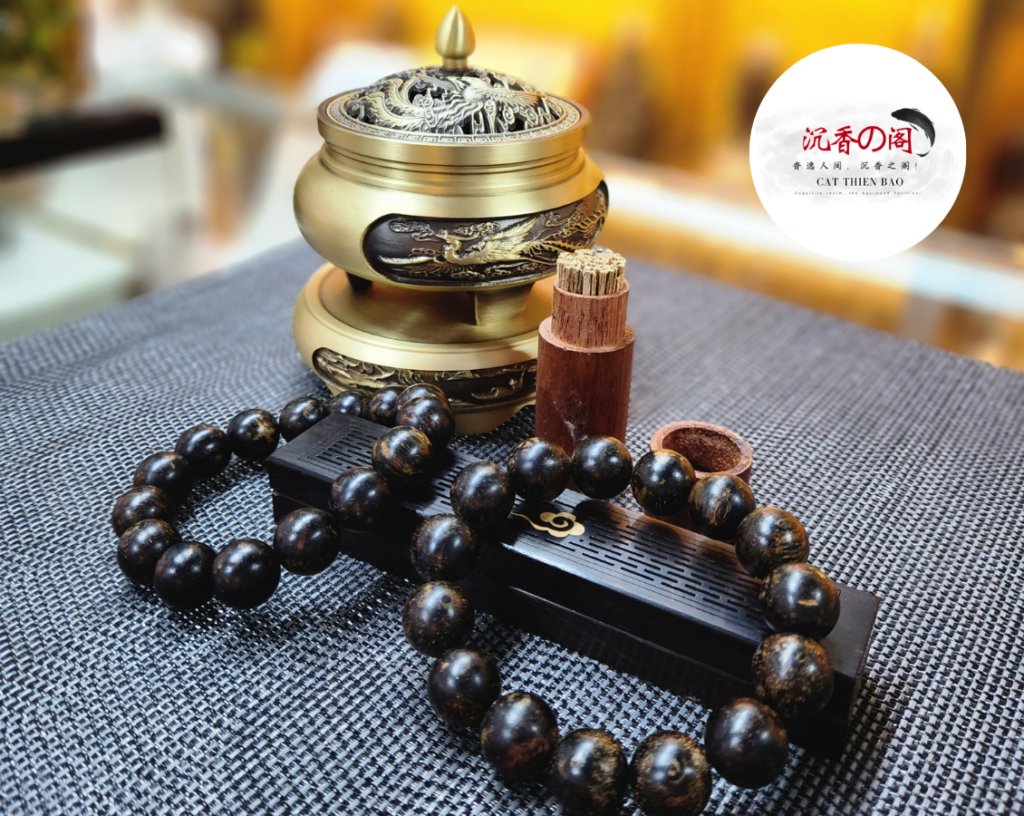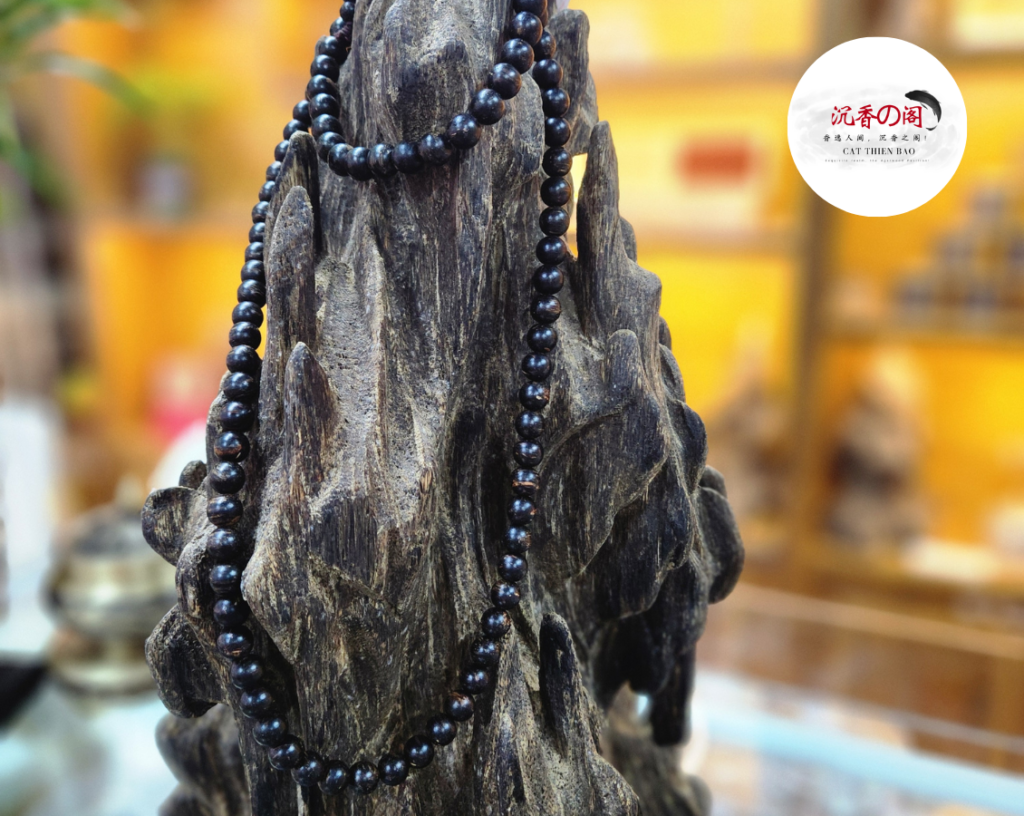The Magic of the Sinking Agarwood Bracelet: Exploring the ‘Wood of the Gods’

Agarwood, often called the ‘Wood of the Gods,’ has been valued for centuries for its wonderful scent and special uses. Recently, people have started making jewelry from agarwood, especially bracelets. Today, we’ll learn about the fascinating sinking agarwood bracelet and what makes it different from the floating kind.
What is a Sinking Agarwood Bracelet?
Sinking agarwood bracelets are special because they are made from a very rare and high-quality type of wood.
Why is it Called ‘Sinking’?
The name “sinking” isn’t just for show. Real sinking agarwood is very dense because it has a lot of resin in it. This high resin content makes the wood so heavy that it sinks in water, unlike other types of agarwood that float.
Benefits of Wearing a Sinking Agarwood Bracelet
Looks Beautiful: Sinking agarwood bracelets have rich, dark colors with streaks of resin. Each bracelet looks unique because of the natural patterns in the wood.
Smells Great: The high resin content gives the bracelet a strong and long-lasting fragrance, making it smell wonderful.
Valuable: Because sinking agarwood is rare, these bracelets can become more valuable over time, making them a good investment.
Sinking vs. Floating Agarwood
To understand why sinking agarwood bracelets are so special, let’s see how they are different from floating agarwood.

Density and Resin Content
Sinking agarwood is heavier and sinks in water due to its high resin content. Floating agarwood, with less resin, stays on the surface.
Stronger Smell
Sinking agarwood has a richer and deeper fragrance because of its higher resin content, making it highly desirable for perfumes and incense.
Higher Cost
Because sinking agarwood is rare and harder to find, it usually costs more, especially when made into jewelry like bracelets.
Tips for Buying a Sinking Agarwood Bracelet
If you want to buy a sinking agarwood bracelet, here are some tips to make sure you get a real one:
Water Test: Drop the bracelet in water. If it sinks, it’s likely real, but this test isn’t foolproof.
Buy from Trusted Sellers: Always buy from reputable sellers. Check their reviews to make sure they are trustworthy.
Know the Scent: Learn the smell of real agarwood so you can spot fake ones that use artificial scents.
How to Tell if Your Sinking Agarwood Bracelet is Natural or Fake
Natural sinking agarwood is heavy and sinks in water because of its high resin content. But some fakes can also sink, so you need to be careful.
The Water Test
This test is simple but not always reliable.
Procedure: Drop the bracelet in water.
- Natural Agarwood: Should sink to the bottom.
- Fake Agarwood: Might also sink if it’s been weighted or treated.
Look and Feel
Real agarwood has a unique texture because of the resin.
- Natural Agarwood: Has a rich, uneven texture with dark streaks of resin.
- Fake Agarwood: Looks more uniform and may have artificial polish or dyes.
Heat Test
Heat can help release the natural smell of agarwood.
Procedure: Heat a needle or pin and touch it to a small part of the bracelet.
- Natural Agarwood: Releases a complex, woody, sweet smell.
- Fake Agarwood: Might smell burnt or like chemicals.
Smell Test
The scent is the best clue.
- Natural Agarwood: Has a rich, long-lasting, woody, and sweet fragrance.
- Fake Agarwood: Lacks depth, fades quickly, or smells artificial.
Conclusion
The sinking agarwood bracelet is a beautiful, fragrant, and valuable piece of jewelry. By understanding its special features and knowing how to check for authenticity, you can enjoy and invest in this amazing bracelet with confidence. Whether for its beauty, wonderful scent, or investment value, the sinking agarwood bracelet is truly special.
